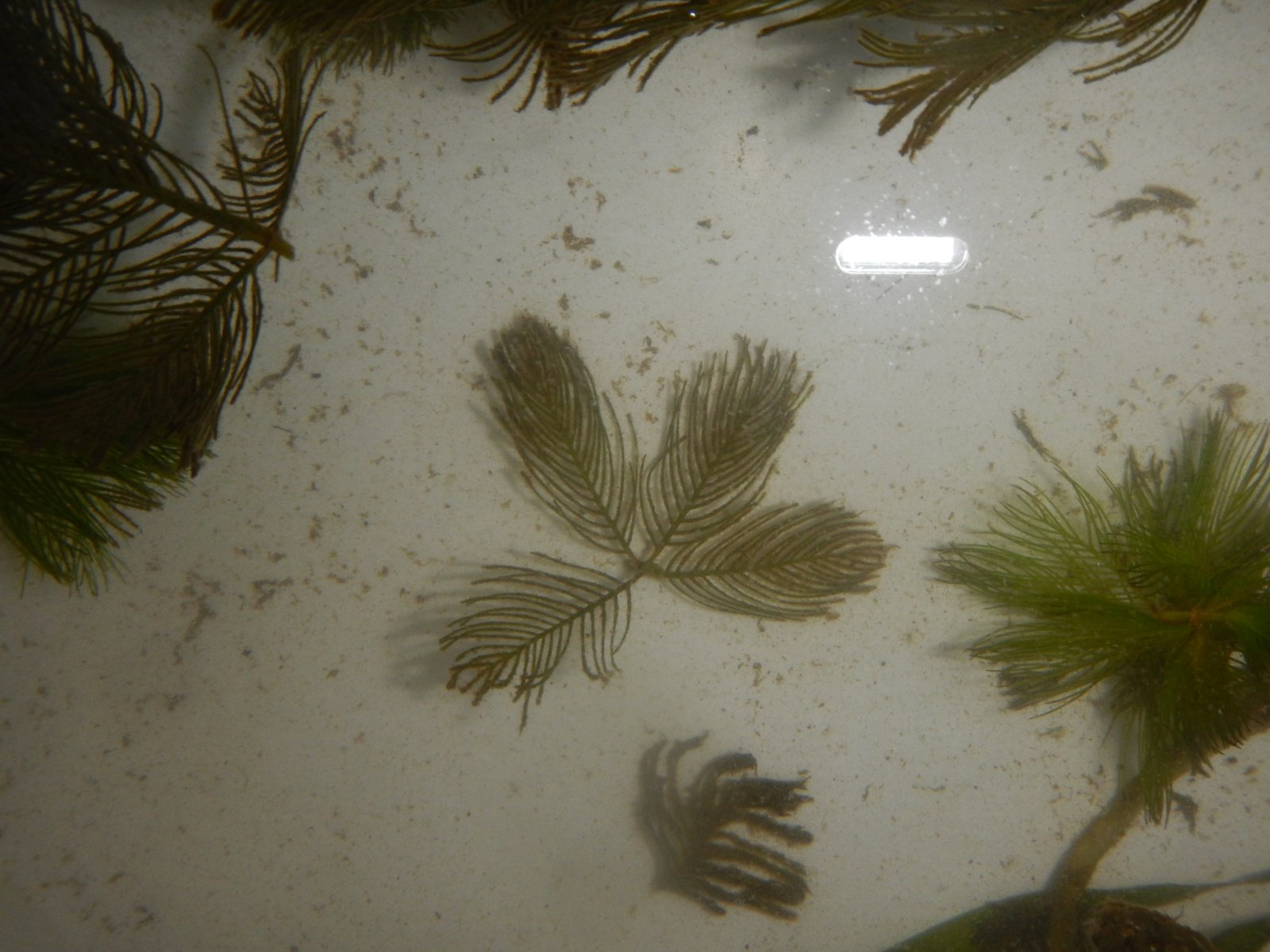
Photo credit : Conseil des bassins versants des Mille-Îles (COBAMIL)
Eurasian water milfoil (Myriophyllum spicatum) is an aquatic plant capable of forming huge colonies near the water surface. It completely blocks the light for other submerged aquatic plants and phytoplankton, which can have dramatic impacts on the food chain and also affect the water temperature. Eurasian water milfoil invasion can completely alter a water body and have detrimental consequences on nautical human activities.
This plant is part of the Haloragaceae family, which includes 6 other native species in Quebec. It is therefore very important to know how to tell the invasive species apart from the native ones. It is believed that Eurasian water milfoil was brought to North America by boat or as an aquarium plant in the 1940s from either Africa or Asia.
This invasive species mostly reproduces vegetatively, but also produces viable seeds. Stem fragments are moved and establish themselves downstream. They then spread by multiplying through their rhizomes. Boaters can also worsen the propagation in lakes by transporting fragments of plants on their boat hull. Many municipalities now compel boat owners to clean any boat or watercraft transported from another water body before entering new waters.
Photo credit : Conseil des bassins versants des Mille-Îles (COBAMIL)
The first occurence of Eurasian water milfoil in Quebec was in 1958 in the St. Lawrence River. It remained there until the 1970s, when we started to record its presence in other rivers and lakes. Today, more than 175 water bodies are affected by this species.
In Laval, its presence was noted in the Deux-Montagnes lake and Prairie River. The Mille-Îles river remains untouched. It is hypothesized that due to the abundance of established and diverse plant populations in the river (53% of the river is occupied by aquatic plants), the plant communities are more resilient and act as stronger competitors against Eurasian water milfoil.
So how can we prevent the spreading and invasion of Eurasian water milfoil in our water ecosystems? Mainly by washing adequately travelling watercraft and by preserving the ecological integrity of water bodies.
CRE Laurentides published a complete management guide (in French). You can access it here.
Sources
CRE Laurentides (in French)
Gouvernement du Québec (in French)
Sentinelle - Government of Quebec (in French)




